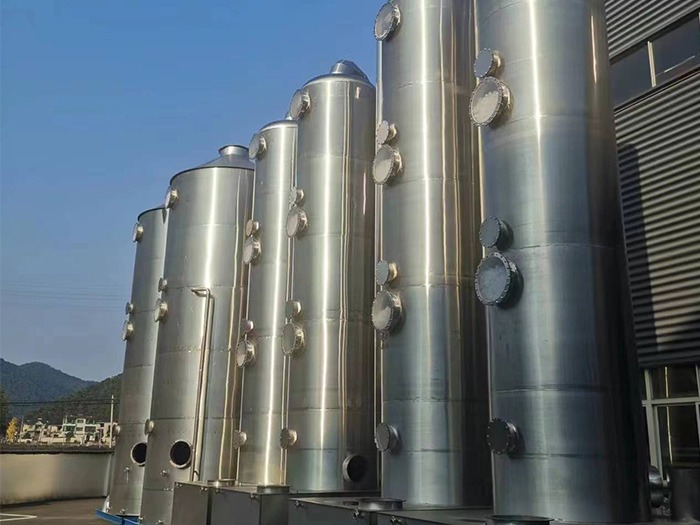Beyond Sterilization: The Complete Guide to Ethylene Oxide Systems and Facility Design
LEON MACHINERY
8/14/20253 min read


Introduction: The Sterilization Challenge
When your product must be absolutely sterile — not just clean, but clinically sterile — you face a problem of precision, safety, and compliance. Microbial contamination doesn’t care about your brand reputation or production deadlines. It only cares about surviving.
For industries like medical devices, pharmaceuticals, and food processing, Ethylene Oxide (EO) sterilization remains one of the most effective, reliable, and material-compatible methods available today. But EO sterilization is not just about loading a chamber and pressing start. It’s a carefully orchestrated process involving preheating rooms, aeration rooms, and scrubber systems — each playing a critical role in safety, effectiveness, and compliance.
This guide unpacks not only the technology but also the operational strategies behind world-class EO sterilization facilities.
Understanding the Ethylene Oxide Sterilizer
Why Ethylene Oxide?
Ethylene Oxide gas is lethal to microorganisms, including spores, at relatively low temperatures and pressures. Unlike steam sterilization, EO doesn’t damage heat-sensitive materials like plastics, electronics, or composite medical devices.
Core Components of an EO Sterilizer
Pressure Vessel (Chamber) – Stainless steel, designed to withstand vacuum and pressure cycles.
Vacuum System – Removes air and moisture to allow EO penetration.
Gas Injection System – Precisely meters EO into the chamber for consistent concentration.
Circulation Fans – Ensure uniform gas distribution.
Temperature & Humidity Control – Maintains the optimal environment for sterilization efficacy.
Operational Cycle
Preconditioning – Temperature and humidity are stabilized before gas exposure.
Gas Exposure – EO is injected and circulated for a specific dwell time.
Evacuation – Gas is removed and routed to the scrubber system.
Aeration – Residual EO is eliminated from products and packaging.
LeonMachinery EO sterilizers integrate PLC-based controls with recipe management, enabling precise adjustments for different product loads.
Preheating Room: Setting the Stage for Success
Purpose
Before sterilization, products must reach a uniform temperature and humidity to ensure effective gas penetration. The preheating room (or preconditioning area) is where this happens.
Key Design Factors
Temperature Control Range: Typically 40–60°C, adjustable.
Humidity Management: 40–80% RH, depending on material specifications.
Air Circulation: High-volume fans ensure even conditioning.
Load Capacity: Custom-engineered for batch sizes, from small loads to multi-pallet industrial batches.
Energy Efficiency Tips
Use heat recovery systems from exhaust air.
Implement insulated wall panels to reduce heat loss.
Aeration Room: The Final Barrier to Residual EO
Purpose
After sterilization, products often retain residual EO gas, which can be toxic if left unchecked. The aeration room accelerates the desorption of EO from products and packaging materials.
Features of a High-Performance Aeration Room
Temperature: Elevated (40–55°C) to speed EO release.
Air Changes: 10–20 air changes per hour for rapid clearance.
Monitoring: Continuous EO sensors for safety compliance.
Ventilation Path: Direct exhaust to the scrubber system for neutralization.
Regulatory Compliance
FDA, ISO 11135, and OSHA all specify maximum allowable EO residual levels.
Proper aeration is critical to meeting these standards.
Scrubber System: Neutralizing the Hazard
Function
A scrubber system prevents EO emissions from entering the environment by chemically neutralizing the gas before release.
Types of Scrubbers
Wet Scrubbers – Use water and acidic/alkaline solutions to absorb EO.
Catalytic Oxidizers – Convert EO to CO₂ and water vapor using high-temperature catalysts.
Hybrid Systems – Combine absorption and oxidation for maximum removal efficiency.
Performance Metrics
EO Removal Efficiency: ≥99.9%
Continuous emission monitoring
Redundant safety shutdowns in case of failure
Integrated Workflow: From Preheat to Final Clearance
Load Transfer – Preheated pallets are moved into the EO sterilizer.
Sterilization Cycle – EO gas exposure, penetration, and evacuation.
Initial Aeration – Chamber-based EO removal.
Secondary Aeration – Room-based extended EO removal.
Emission Treatment – All exhaust gases pass through the scrubber.
This closed-loop approach ensures worker safety, environmental compliance, and consistent product sterility.
Safety Considerations in EO Facilities
Explosion-Proof Equipment: EO is highly flammable; all electrical systems must be ATEX or NEC compliant.
Gas Detection Systems: Continuous monitoring for leaks in preheating, sterilization, and aeration areas.
Emergency Ventilation: High-capacity fans that can purge rooms rapidly.
Operator Training: Procedures for loading/unloading, cycle initiation, and emergency shutdown.
Case Study: LeonMachinery’s EO Facility Upgrade
Client: A major medical device manufacturer in Southeast Asia
Challenge: Outdated sterilization system with poor cycle consistency and high residual EO levels.
Solution:
Installed a custom 12-pallet EO sterilizer with PLC control.
Added a preheating room with zoned temperature control.
Implemented a dual-stage scrubber system for emissions.
Results:Sterilization cycle time reduced by 22%.
Residual EO levels consistently below ISO 10993-7 limits.
Energy use cut by 18% with heat recovery systems.
Why Choose LeonMachinery
LeonMachinery delivers turnkey EO sterilization solutions — from chamber fabrication to full environmental compliance.
Contact Us:
📞 WhatsApp: +8618136773114
📧 Email: leonxu0317@gmail.com
